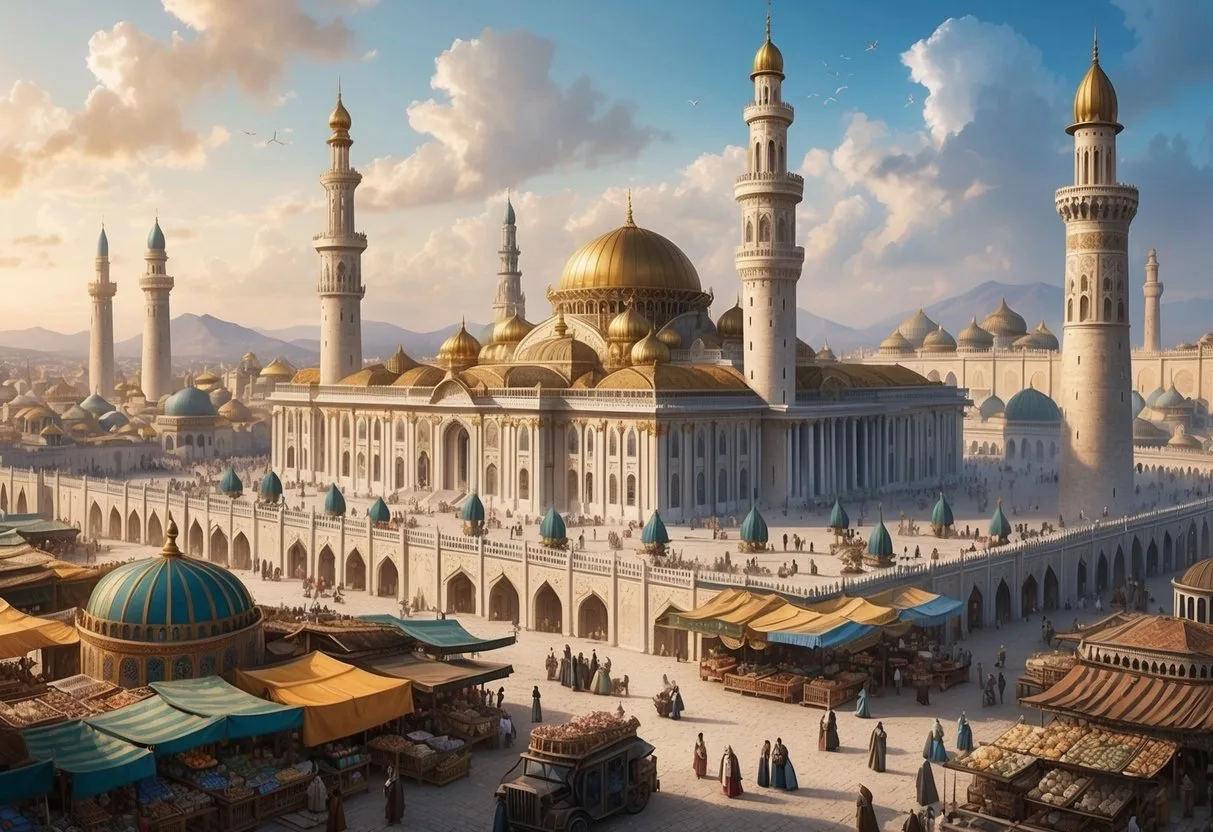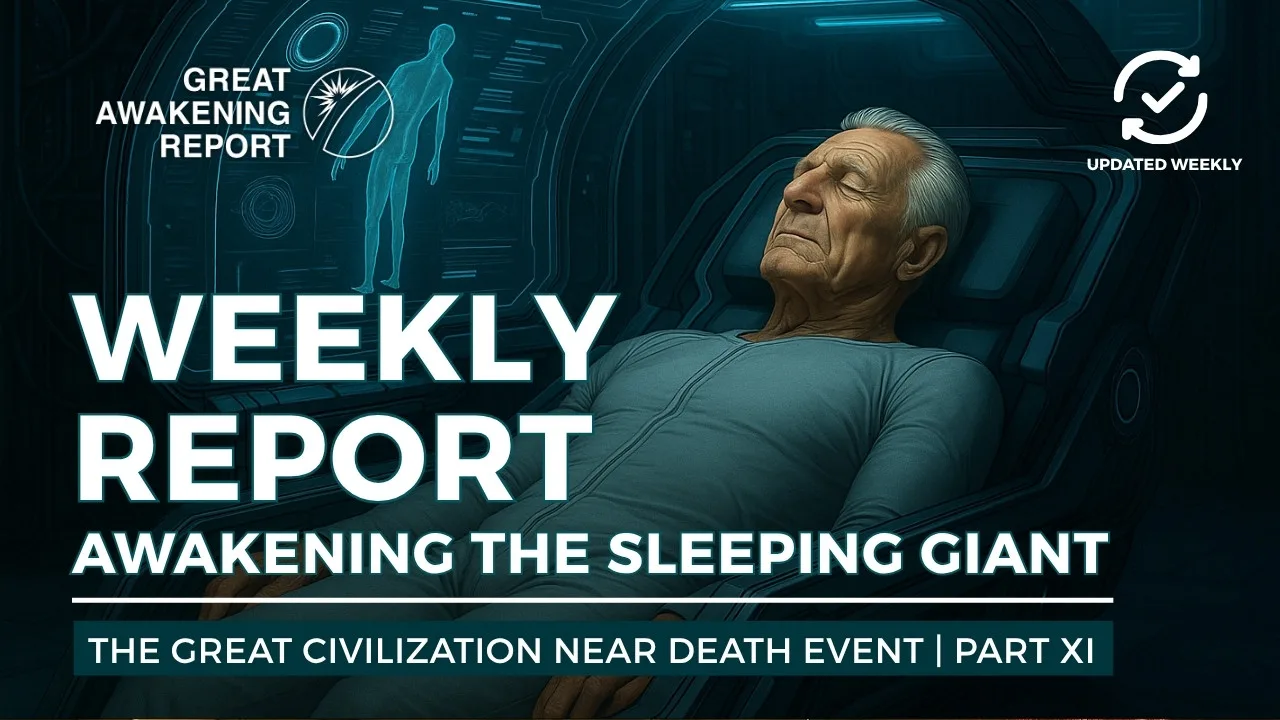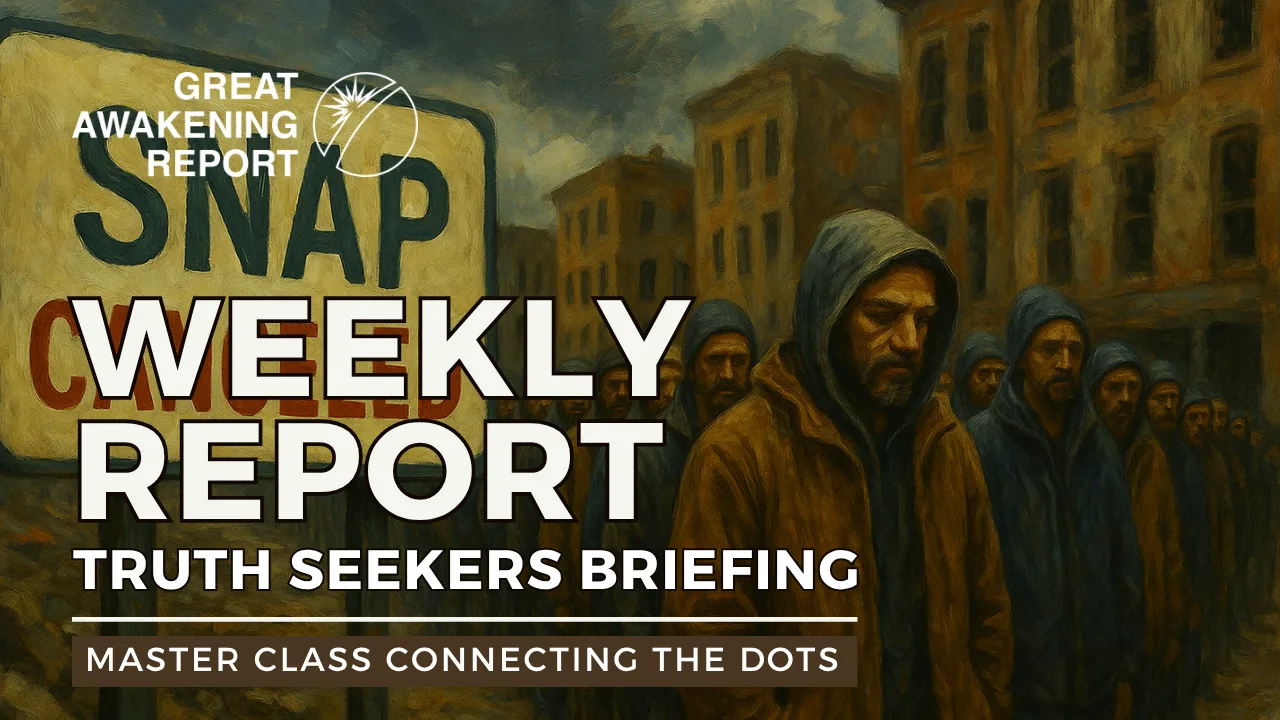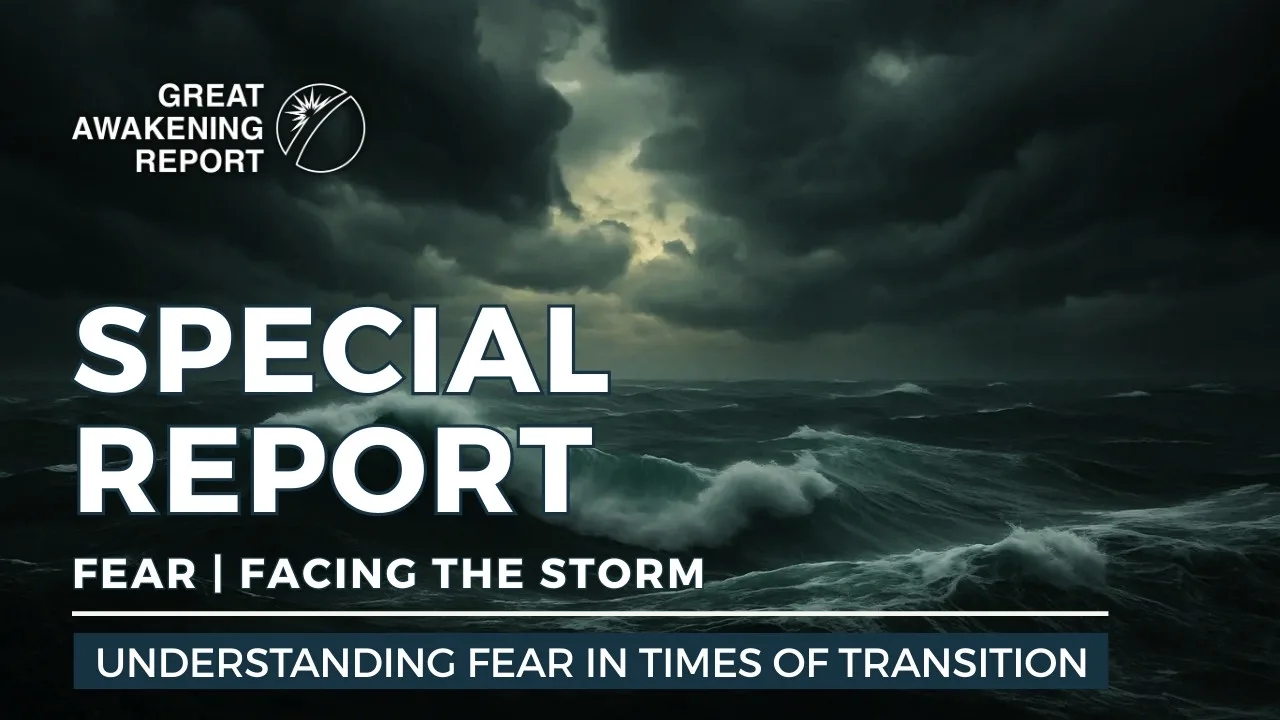Introduction to the Tartarian Empire
The Tartarian Empire, often overshadowed in mainstream historical narratives, represents a fascinating chapter in human history that spans various regions and cultures. Believed to have existed from the 13th to the 19th century, the empire is thought to have encompassed territories across Asia, Europe, and parts of North America. Its significance lies not only in its cultural contributions but also in its political and architectural achievements, which are often attributed to the collective influence of the diverse populations within its borders.
Despite its vast reach, the Tartarian Empire has largely been neglected in historical studies. Various conspiracy theories and discussions have risen around the idea that significant events, such as the so-called “mud floods,” contributed to the suppression of Tartarian history, suggesting a deliberate effort to erase it from collective memory. This narrative positions the Tartarian Empire as an alternative history worth exploring, highlighted by grand architectural remnants and cultural artifacts that prompt re-evaluation of established historical timelines.
The reasons for this historical oversight could be manifold, including the dismissal of alternative historical interpretations, the dominance of Eurocentric narratives in history books, and the political implications of recognizing a vast interconnected empire that does not fit neatly within conventional frameworks. Such factors contribute to a broader discourse about the gaps in our understanding of world history and the need for inclusive narratives that honor diverse civilizations.
For a deeper exploration into related themes, you may refer to articles such as the discussion on historical narratives in the context of Tartarian Empire: 1,000 Years of Hidden History. Additionally, understanding how present-day architecture ties back to historical empires can be accessed through insightful content such as Tartarian Empire: The Forgotten History (Part II).
The Rise and Fall of Tartaria
The rise and fall of Tartaria, often depicted as a vast and influential empire, is marked by significant events that shaped its trajectory and eventual decline amidst evolving global dynamics. The beginnings of Tartaria’s prominence can be traced back to strategic alliances formed with various tribes and kingdoms across Asia and Europe in the 14th century. These alliances bolstered its military strength and facilitated trade, allowing for extensive economic prosperity across the region.
However, the empire faced critical challenges during the 17th and 18th centuries, particularly from expanding European powers. Notable conflicts, such as the Siberian Campaign by Russian forces, highlighted Tartaria’s vulnerabilities. The weakening of its military capabilities and border defenses led to a gradual loss of territory.
Moreover, the transformation in global power dynamics played a crucial role in Tartaria’s decline. As Western powers advanced technologically and economically, the traditional power structures of Tartaria struggled to adapt. The imposition of European colonial interests culminated in a series of invasions and territorial claims that further diminished Tartaria’s influence.
As the 19th century approached, these pressures, coupled with internal strife and diminishing trade routes, marked the definitive decline of Tartaria. Subsequently, the narratives surrounding its existence have fueled theories of a grand historical cover-up, igniting debates about the true extent and legacy of this once-mighty empire. For more on related topics, see the Tartarian Empire’s hidden history.
Architectural Wonders: Evidence of Tartaria
The architectural remnants attributed to Tartaria—an alleged advanced civilization—are a captivating subject that challenges the prevailing historical narratives. Structures decorated with intricate designs and monumental scales, often resembling Gothic or Classical styles, populate various parts of the world, suggesting a civilization with exceptional engineering capabilities. Proponents argue that these buildings may have been constructed using advanced techniques and materials that have since been suppressed from historical record.
Key examples include massive cathedrals and public buildings featuring ornate detailing, which are often attributed to Tartarian influence. The architectural features often incorporate elements like vast arches, elaborate columns, and elaborate facades, which were not common in the periods typically assigned to these structures. The existence of such structures raises questions about the timelines of architectural development and the possible erasure of certain historical narratives.
Moreover, Tartarian architecture often showcases grandiose designs that are somewhat out of sync with the technological achievements of the perceived historical timelines. This has led to speculation about a more sophisticated society that utilized advanced energy sources and techniques, perhaps even long-forgotten technologies that could achieve what modern construction methods deem labor-intensive or impossible.
Supporters of the Tartaria theory also point to “mud floods”—a phenomenon where significant portions of buildings appear buried under more recent layers of earth, suggesting that there could have been large-scale environmental events that affected these societies, leading to their eventual obscurity and the suppression of their achievements. Such narratives often align with reports of lost civilizations and the reevaluation of human history, hinting that what has been taught may be incomplete or heavily distorted.
In summary, the architectural wonders attributed to Tartaria not only invite admiration but also prompt critical reflection on historical accuracy, challenging the boundaries of accepted knowledge and our understanding of human capability throughout time. As interest grows in these anomalies, the conversation about our civilization’s past continues to evolve, suggesting a deeper exploration could yield significant revelations about lost technologies and cultural histories. For more insights, refer to the Great Awakening Report on Tartarian architecture.
Cultural Insights: Society and People of Tartaria
The culture of Tartaria was characterized by a rich tapestry of beliefs, practices, and societal structures that highlighted its diversity. At its core, the Tartarian society revolved around a strong sense of community and spirituality. The populace practiced various traditions and folklore, emphasizing their connection to nature and the cosmos. The Tartarian belief system often integrated elements of animism and ancestor worship, reflecting a profound respect for the land and its resources.
Agriculturally, Tartarians employed advanced techniques for farming, including irrigation systems tailored to their vast landscapes. These practices significantly contributed to their ability to sustain large populations and engage in trade. Notably, they developed sophisticated architecture, which varied from intricate wooden structures in northern regions to stone edifices in urban centers. Such architectural prowess hinted at a highly organized society with specialized labor forces.
Socially, Tartaria was marked by a blend of egalitarian principles and hierarchical structures. While local communities had considerable autonomy, there were overarching rulers who presided over broader territories, ensuring that diverse cultural identities were respected. Festivals and public gatherings were common, fostering social cohesion and reinforcing cultural identity among the people.
In conclusion, the cultural practices, beliefs, and societal structures of Tartaria were emblematic of a complex civilization deeply connected to its environment, showcasing a blend of spirituality, advanced agricultural systems, and diverse social organization. For further insights, visit related articles on the Tartarian Empire’s architectural innovations and the impact of their agricultural practices.
Debunking Myths: Historical Misinterpretations
The narrative surrounding Tartaria, often characterized as a lost and forgotten empire, is rife with misconceptions primarily fueled by misinterpretations of historical evidence and conspiracy theories. The myth proposes that Tartaria was a technologically advanced society whose existence has been systematically erased from history books. This erroneous view stems from various sources, including the misreading of world maps, photographs of ornate architecture, and selective interpretation of historical texts.
One prevalent misconception is that Tartaria was a global superpower overshadowed by modern nations. However, historical research reveals that what is referred to as Tartaria was predominantly a geographical term used by 18th and 19th-century cartographers, describing a vast region in Central Asia that was home to numerous nomadic tribes. The civilization referred to as Tartary was fragmented and lacked the centralized governance typically associated with empires, thus complicating its portrayal as a singular entity with advanced technology or culture. Investigators examining this narrative note the importance of cross-referencing primary historical documents and archaeological findings to combat these fabrications and assess the realities of Tartarian history [Source: Great Awakening Report].
Additionally, the influence of historical narratives on contemporary understanding cannot be overlooked. The Romantic era’s fascination with lost civilizations catalyzed the allure of Tartaria, prompting individuals to draw connections that are not based on factual evidence but rather on a desire for a grander history. Distortion of historical facts, driven by cultural nostalgia and the human inclination to embellish the past, continues to color interpretations of Tartaria today. It is critical for history enthusiasts and scholars alike to advocate for an accurate portrayal that not only preserves historical integrity but also combats the spread of misinformation regarding empires like Tartaria [Source: Great Awakening Report].
Understanding these myths and their origins is essential in navigating the complex terrain of historical narratives and ensuring that discussions about empires like Tartaria remain grounded in verified academic research.
The Role of Technology in Historical Narrative
Advancements in technology have significantly transformed how historians and researchers examine historical records, allowing them to challenge traditional narratives and interpretations. The digitization of archival materials, such as letters, documents, and photos, enables broader access and encourages collaborative analysis among historians worldwide. For instance, platforms that integrate AI and data analytics are now being utilized to parse through vast amounts of data, revealing connections that were previously overlooked. This not only enhances the research process but also allows for a more nuanced understanding of historical events.
Technological tools such as geographic information systems (GIS) and digital mapping assist historians in visualizing historical phenomena, thus enabling them to trace events across time and space. These tools create dynamic representations of historical data, which can challenge existing geographical and cultural narratives. For example, GIS is increasingly used to analyze socio-political changes by mapping historical events and comparing them with contemporary data [Source: Australian Mining].
Digital humanities projects further allow historians to engage with texts in innovative ways. Projects like crowdsourcing transcription efforts on platforms such as Zooniverse enable the public to contribute to the analysis of historical documents, fostering a collective revisiting of history that can reveal previously underrepresented voices and perspectives in the historical narrative [Source: Farm Progress].
Overall, technology serves as a powerful tool not only for preserving history but also for reshaping our understanding of it, leading to richer and more diverse historical narratives that can challenge traditional interpretations.
Modern Implications of Tartarian Discoveries
The rediscovery of Tartarian history can significantly reshape contemporary society’s perspective on history, imperialism, and cultural identity. This exploration brings to light the complexities surrounding imperial narratives, encouraging a re-evaluation of historical events often sidelined or misrepresented in mainstream discourse.
As scholars delve into Tartarian artifacts and texts, they unearth a legacy that questions dominant historical accounts, suggesting the existence of advanced civilizations that were unjustly erased from global history. This portrayal challenges prevailing notions of progress and domination, often celebrated in nationalist narratives. By advocating for a more inclusive historical view, societies might foster a deeper understanding of the intersections between culture, power, and identity.
Furthermore, the implications of such findings extend to cultural identity, as communities reclaim lost histories that affirm their ancestral connections and diverse heritages. This revival not only strengthens national pride but also promotes a recognition of the shared human experience, thus emphasizing interconnectedness over division. For example, movements highlighting indigenous perspectives against imperialistic frameworks encourage broader dialogues about reparative justice and historical accountability.
The unfolding discourse urges us to question teachings rooted in an Eurocentric paradigm, proposing instead a multi-faceted narrative that includes various cultural perspectives. Such paradigms hold potential for transforming social dynamics, particularly in societies grappling with systemic inequalities, by advocating for cultural exchanges that resonate with a more equitable understanding of humanity’s past.
In the face of ongoing historical suppression, the rediscovery of Tartarian history underscores the importance of accessibility to diverse narratives and the ability to reshape collective memory for future generations. As these discussions gain momentum, the current landscape of socio-political structures could witness a shift towards inclusivity and holistic belonging, ultimately enriching the tapestry of global culture.
For further context, see the discussion on the perception of history in contemporary societal structures here.
Conclusion: Rethinking Historical Narratives
Rethinking historical narratives is crucial to fostering a society that values truth and transparency. The established frameworks through which we understand history often reflect biases that can obscure the realities of people’s experiences and the complexities of past events. By questioning these narratives, we create space for a broader range of perspectives, enabling a more inclusive and accurate depiction of history. This process not only helps rectify historical oversights—such as the contributions of marginalized communities—but also encourages critical thinking, ultimately shaping a more informed citizenry capable of learning from the past.
New understandings of history can influence our worldview by challenging long-held beliefs and prompting discussions around justice, equity, and the lessons that history imparts. Reflecting on different viewpoints can lead to a collective shift in consciousness, enhancing empathy towards others and driving positive social change. As stated in recent examinations of societal progress, the evolution of knowledge is critical for both individual and collective growth, underscoring the necessity of re-examining our historical narratives for a brighter future. By acknowledging the multifaceted nature of history, we embrace a holistic understanding that fosters connections across diverse experiences, ultimately contributing to a more just and equitable society.
For more on how historical narratives shape contemporary issues, see our weekly briefing.
Sources
– Tartarian Empire: 1,000 Years of Hidden History
– Tartarian Empire: The Forgotten History (Part II)
– Great Awakening Report on Tartarian architecture
– Impact of agricultural practices
– Source: Great Awakening Report
– Source: Great Awakening Report
– Source: Australian Mining
– Source: Farm Progress
– Source on teaching history
– Weekly briefing on contemporary issues
Share This Report
Have questions?
At Great Awakening Report, we are dedicated to supporting your journey toward truth and enlightenment through our specialized Coaching and Consulting services.
Coaching Services: Our coaching programs are designed to guide you through personal awakening and transformation. We offer personalized sessions that focus on expanding consciousness, uncovering hidden truths, and fostering spiritual growth. Our experienced coaches provide the tools and insights necessary to navigate your path with clarity and confidence.
Consulting Services: For organizations and individuals seeking deeper understanding and strategic guidance, our consulting services offer expert analysis and solutions. We delve into areas such as global transitions, alternative news insights, and consciousness studies to provide comprehensive strategies tailored to your unique objectives.
Embark on a transformative journey with our Coaching and Consulting services, and unlock your highest potential. To learn more and schedule a session, visit our Coaching and Consulting pages.
Thank you
Thank you to our subscribers and readers for your continued support and dedication to truth and awakening. Your encouragement, engagement, and belief in our mission make everything we do possible. Together, we are expanding awareness and helping illuminate the path forward.
If you would like to further support the Great Awakening team and our ongoing efforts to share insight, knowledge, and truth, you can DONATE HERE.
With deep gratitude,
– Great Awakening Team
DISCLAIMER: All statements, claims, views and opinions that appear anywhere on this site, whether stated as theories or absolute facts, are always presented by The Great Awakening Report (GAR) as unverified—and should be personally fact checked and discerned by you, the reader.Any opinions or statements herein presented are not necessarily promoted, endorsed, or agreed to by GAR, those who work with GAR, or those who read or subscribe to GAR.Any belief or conclusion gleaned from content on this site is solely the responsibility of you the reader to substantiate.Any actions taken by those who read material on this site are solely the responsibility of the acting party.You are encouraged to think for yourself and do your own research.Nothing on this site is meant to be believed without question or personal appraisal.
COPYRIGHT DISCLAIMER: Citation of articles and authors in this report does not imply ownership. Works and images presented here fall under Fair Use Section 107 and are used for commentary on globally significant newsworthy events. Under Section 107 of the Copyright Act 1976, allowance is made for fair use for purposes such as criticism, comment, news reporting, teaching, scholarship, and research.
COMMUNITY GUIDELINES DISCLAIMER: The points of view and purpose of this video is not to bully or harass anybody, but rather share that opinion and thoughts with other like-minded individuals curious about the subject.










